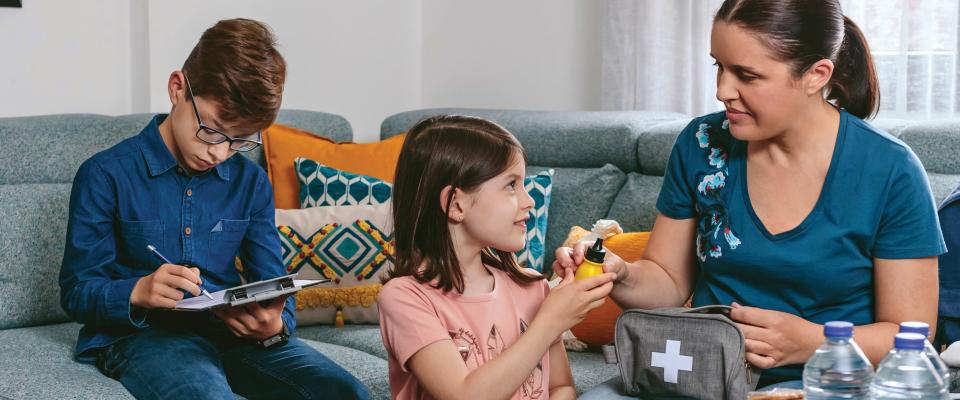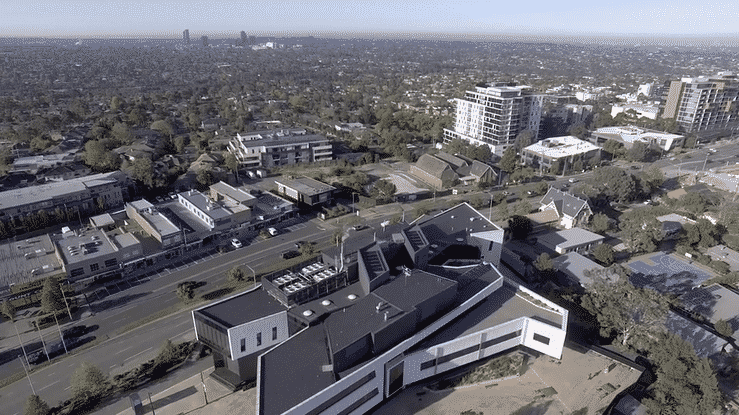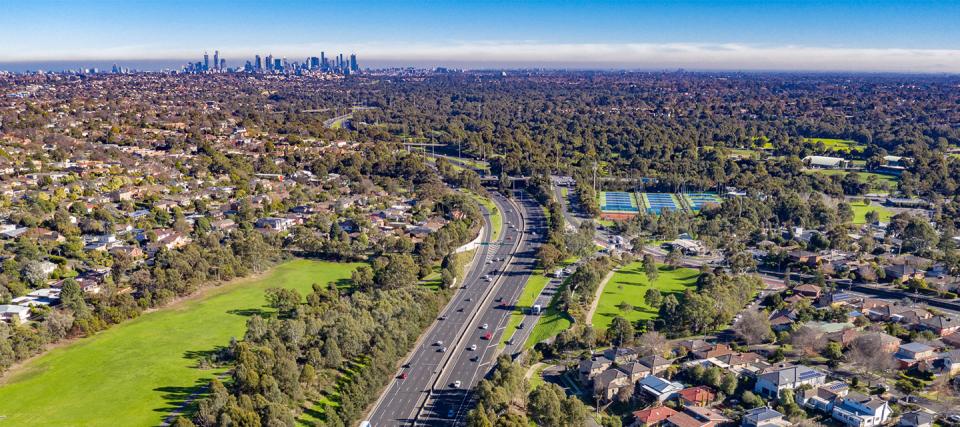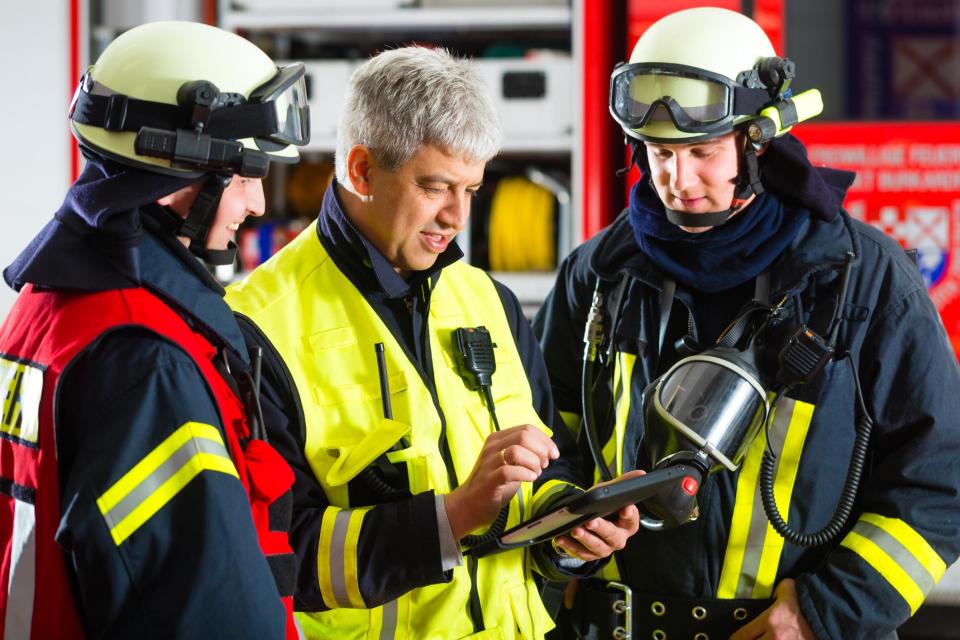
We support and encourage the community to prepare for emergencies.
In a life threatening emergency, call 000.
For current emergency information and warnings, and to download the app, visit VicEmergency.
We support and encourage the community to prepare for emergencies.
In a life threatening emergency, call 000.
For current emergency information and warnings, and to download the app, visit VicEmergency.

View discussions from the community relating to preparing for an emergency including frequently raised questions.
Shared community statements are not endorsed actions to take in an emergency but serve to help you evaluate your current plan. See what your community had to say.
There are a range of emergency planning tools available to help you and your loved ones prepare.
Below are some resources and services to help you prepare for bushfires - especially if you live in a bushfire prone area - and links to keep you updated during an emergency.
Below are some resources to help you prepare for floods and storms - especially if you live in a flood prone area - and also links to report flooded drains or get updates during an emergency.
Below are some resources to help you prevent building fires.
Through increased climate action, we aim to enhance the liveability of Manningham, promote community health and wellbeing, and boost the resilience of our natural and built environments, as well as the economy.
Focus areas:
View all planning applications on our planning applications portal. You can view details of lodged applications such as the location of proposed land development or use and the outcome of any assessment of an application.
Use the search fields to find applications of interest.
Enter the application number to directly access the application details otherwise you can search by address.
Manningham Council must fulfill the requirements of the Information Privacy Act 2000 which is applied so far as is reasonably practicable to personal information held on public registers. Under the Information Privacy Act 2000 it may be an interference with the privacy of an individual for a person to search through the names, addresses and other information held on the Planning Applications Portal in order to identify and market products or services to a section of the portal that meets a particular socioeconomic profile.
Consequently, a condition of use of the Planning Applications Portal is that you will not facilitate direct marketing to a property where an entry for that property does not show consent to receive direct marketing at that address.
There is a legal process to enable the planning scheme to be amended. You can find the recent changes to our planning scheme below.
Resolution to seek authorisation from the Minister for Planning to prepare and exhibit an amendment
Authorisation may or may not be granted by the Minister for Planning, or may granted subject to conditions.
Opportunity for the public, and other key stakeholders, to make a written submission in support of, or objection, to the proposed amendment
Consideration of all written submissions. Council must then decide to either:
Consideration of the submissions by an independent Panel, appointed by the Minister for Planning
Consideration of the Panel's findings and recommendations. Council must then decide to either:
Submission of final adopted amendment by Council to the Minister for Planning for approval
Minister for Planning approves or refuses the amendment
To view all planning scheme amendments, you can:
Here is a summary of the planning permit process.
New to planning? Get a general understanding of what permits you will need before making any applications
Get advice in writing about whether or not your proposed building, works or land use needs approval from us.
Get feedback on your draft proposals, concepts or plans, before you submit a formal planning permit application.
Check out some common scenarios and resources to help you understand what is needed before applying

Everything you need to know to start a planning permit application.
Stay up to date with your application's status in the planning applications portal.
Find out what you need to do to amend your permit before the public notification stage.
Review all Applications currently undergoing assessment.
Any person who believes they will be affected by a planning application can lodge an objection during advertising.
Find out what you need to do to amend your permit before the decision stage.
Only the Victorian Civil and Administrative Tribunal (VCAT) can review an application. After we have made a planning permit decision, we cannot undertake an internal review.
Landscape bonds are a condition of a planning permit. We ask for payment of bonds to ensure landscaping works are properly completed.
If you need more time for development or commencement of land use, you will need to ask for an extension to the planning permit.
An Agreement under Section 173 of the Planning and Environment Act (or Section 173 Agreement) is a legal agreement between us and the owners of a property that is registered on a property title.
If you would like to to amend approved plans or conditions of a Planning Permit, you can find out more information and submit your application here.
If you are developing land in Manningham, you may need to submit a Construction Management Plan (CMP) as required by a condition of your planning permit.
If your Planning Permit required payment of a landscape bond, you will need to apply for a refund once your development is completed.
Follow these easy steps to change your planning application details:
There are a range of health and support services, programs and resources to support our community.

These community-based agencies and organisations provide emergency relief and material aid such as food hampers, vouchers and pantries to people in financial crisis living in Manningham as part of the Food Relief Network.

Our community is diverse with residents from more than 140 countries.


Mental health is a state of emotional, social, and psychological wellbeing. It affects how we think, feel and act. It also impacts how we handle stress, relate to others, and make choices.
Find support with our online resource directory.
We are committed to building a better Manningham that works for all. Find information that will help you with your works – no matter how big or small your renovation or building project.
Everything you need for your building, planning, construction and renovation projects.

View all planning applications on our planning applications portal. You can view details of lodged applications such as the location of proposed land development or use and the outcome of any assessment of an application.

View the available options to learn more about your property rates and valuations.

Take a look at the capital works programs we are currently undertaking.
Get guidance on popular topics like removing trees or building fences to understand land-use, planning, building and infrastructure needs. You can also find links to important mapping and planning resources.
New to property and development?
Get familiar with the general permit process with our when do you need a permit guide.
Find out how to remove a tree or report issues with a tree on public land.
See what's required when building or replacing a fence.
Understand what's needed when you have a pool or spa.
Find out about connecting to sewer and installing, removing or decommissioning a new septic tank.
Get advice and find heritage listed properties in Manningham.
These guides below may help you with planning your development:

View a range of links to advice and resources on things that will assist you in building a sustainable property.

View a range of links to advice and resources on things that will assist you in building a safe property.

View resources to help you prepare your property for various types of emergencies like bushfires, floods and storms.
Before embarking on building, renovating, tree removal/lopping or any other works, it is important to ascertain whether you require a permit.
Planning permits and building permits serve different purposes.
A planning permit is required to ensure that your project complies with the relevant zoning and overlay controls applicable to your property and to ensure that your project considers its impact on the surrounding area with respect to character, built form and materials, surrounding neighbours, traffic, environmental impacts and community need.
A building permit focuses on the technical aspects of construction and safety ensuring that your project complies with the relevant building codes and regulations.
Links to the relevant controls are:
Here are some common projects that need approval - contact us even if your project is not listed here:
New to building or renovation?
For advice on all things renovation and construction, visit the Victorian Building Authority (VBA).
Every dream project is different with its own needs and challenges. Here are the steps to give you a rough guide on the process, timeframes and costs when starting any project.
You can also view:
If you don't need a planning permit you can proceed straight to building permit
After you apply you can also
We do not issue building permits so you will need to contact a building surveyor to organise a building permit.
You will need the permit to ensure what you're hoping to construct or change is done right and to building code standards.
You may need permits for connecting to infrastructure, protection of public assets and more. Often you will find out which permits you need throughout the process, so it is always best to discuss your plans with us or industry professionals.
Some common permits include:
Hoping to build sustainably?
We've created a list of resources to help you build a sustainable, energy-efficient home or commercial building.
View resources
Whether you need official property information to support permit applications or for buying and selling properties - below are links to some of our most common requests:
View what types of building plans you can request a copy of and find out how to do it.
Find out how to request the types of Regulation 51 statements for buying, selling or preparing a building permit.
You may request a certificate of ownership for multiple needs. You may also use this link to find out who owns your neighbouring property for fencing purposes.
Get written advice about whether or not your proposed building, works or land use needs a permit.
Can't find what you're looking for?
Are you passionate about the Manningham community and interested in joining one of our Advisory Committees?
Come along to our helpful online information session to learn what's involved when you join an Advisory Committee.
We're currently seeking people to join our Arts, Healthy Ageing, Disability and Youth advisory committees. These committees provide a formal way for Council to seek input and guidance from the community on a variety of topics.
Expressions of interest to join our Arts, Healthy Ageing, Disability and Youth advisory committees are open until Wednesday 18 October.
Discover the pathway to taking your club to new heights with our exclusive club development workshop - Planning for success (strategic planning). Learn the art of setting clear objectives, making informed decisions, and creating a roadmap for long-term success.
This session will be facilitated by Michael King from MK Consulting. Michael will share actionable strategies and real-world examples tailored to clubs of all sizes and backgrounds.
Whether you're an experienced club leader or just starting, this workshop equips you with the tools to drive your club toward greatness. It's also a great networking opportunity to connect with fellow enthusiasts and build valuable connections.
What will be covered on the night?
This session will focus on key drivers behind planning for your clubs success, including:
This is the third session of Manningham Council's club development workshop series.
Don't miss this chance to empower your club and make it stand out. Secure your spot today, and together, let's embark on the journey to club success!
Home Harvest Manningham is a monthly home gardening seminar series that will teach you how to grow your own delicious fresh food at home.
Manningham has more than four seasons. Duncan Cocking from Leaf, Root and Fruit will deep dive into succession planning for local conditions.
Duncan will discuss the patterns that he sees in nature and how easily you can begin observing them too. Use these observations to inspire your gardening activities by working with nature rather than against it. Learn how to refine your succession planting and ripen that elusive Christmas tomato. Create your own action plan for your vegetable patch.
Topics covered include:
Food swap from 6.45pm, session starts at 7.00pm.
Registration is recommended but not required.
This event is part of our Inspired Living Series. This series showcases an exciting range of fun and sustainable activities and events for all ages, supporting sustainability at home, in the community and at work.
Keep up to date with our latest environment and sustainability events.
Join Eastern Community Legal Centre (ECLC) for Taking Charge: Planning for the future, including healthy ageing, wills and powers of attorney.
Visit The Pines, Bulleen and Warrandyte Libraries during Victorian Law Week (20 to 26 May) to learn about legal issues relevant to you and your community.
Information brochures from ECLC will be made available from information stalls.
We encourage community members to join the Wonga Park CFA for this Bushfire community meeting.
This session covers fire safety essentials information including:
We encourage community members to join the Wonga Park CFA for this Bushfire community meeting.
This session covers fire safety essentials information including:
Manningham Community Local Law provides rules around lighting fires and open-air burning.
This applies to anyone who wants to light a fire in the open air or incinerator for fuel reduction and fires lit for warmth or cooking.
These laws help make sure that burning is done safely and has no impact on neighbours or the environment.
You can light a fire for warmth or to cook food without a permit as long as you follow the requirements of the Community Local Law.
Before you light a fire, find out what you can and can't do.
This applies if you are lighting a fire for any reason in Manningham.
Do not light a fire:
Make sure:
Open air burning (burning off) can be conducted on properties as long as you follow the follow the conditions of the Local Law.
If your land is less than 2,501 square metres: Open air burning is not permitted. You can only light a fire for the purposes of warmth and food preparation.
If your land is 2,501 square metres and larger: You can conduct open air burning without a permit, provided certain conditions are met.
Open air burning means: a fire lit in the open air or within an incinerator for the purpose of burning vegetation for fuel control or reduction purposes.
If you cannot comply with the requirements you cannot light your fire without a permit from Council.
Contact us to discuss your options.
Before you conduct open air burning you must understand your requirements under the Community Local Law.
Burning must be done safely and have no impact on your neighbours or the environment.
Look at alternative options like booking a bundled branches collection.
Open air burning can only be conducted during the months of May, October and November for land located west of Mullum Mullum creek.
Do not burn:
When burning off make sure:
A person must not light a fire:
unless they have obtained Council’s prior written consent.
DEFINITION: For the purposes of clause 34, the term ‘Open air burning’ is defined under the Local Law to mean a fire lit in the open air or within an incinerator for the purpose of burning vegetation for fuel control or reduction purposes.
A person who has lit or allowed a fire to remain alight contrary to the provisions in this Part or any condition contained in a permit, must extinguish the fire immediately on being directed to do so by:
A person who owns or occupies land must not allow any chimney on that land to discharge, ash, smoke or dust to such an extent that it becomes a public nuisance, or is dangerous or is likely to be dangerous to the health and safety of any person or animal, or is harming or likely to be harmful to the environment.
There has been no change to current laws. On land of this size a fire can only be lit for the purposes of warmth and food preparation.
You must comply with the General Provisions for burning as listed in Clause 33 of the Local Law.
The change to the Local Law means properties that are 2,501 square metres and larger will no longer require a permit for open air burning provided certain conditions are met.
These conditions are contained in Local Law Clause 34.
Please note that the existing provision which applies to properties located to the west of Mullum Mullum Creek still limits open air burning to the months of May, October and November.
As the person lighting the fire you must ensure you comply with ALL the requirements set out in the Local Law in Clause 33 and 34.
You will still need to give notice to ESTA (Emergency Services Telecommunications Authority) prior to the burn on 1800 668 511 (Prevents unnecessary response from fire brigades).
Yes.
You can carry out open air burning but only during the months of May, October and November.
You must also comply with Clause 33 and Clause 34 of the Manningham Community Local Law.
Open Air Burning outside these regulations will require landowners to obtain a permit from Council before burning off.
Yes.
You can light a fire for warmth or to cook on your property. You must comply with the General Provisions for burning as listed in Clause 33 of the Local Law.
No.
You are not permitted to light any fires on Council land, Crown Land or public place without first getting written approval.
See Clause 32 of the Manningham Community Local Law.
Yes.
Make sure you meet all the requirements of Clause 33 and Clause 34 of Manningham Community Local Law.
No.
If you want your fire to burn overnight, you will need to get a Permit to conduct an Open-Air Burn from Council before you begin burning off.
No.
The Community Local Law prohibits open air burning during the fire danger period.
However, the Country Fire Authority (CFA) may issue a Permit under the Country Fire Authority Act.
Yes.
You must put your fire out if Council, a member of Victoria Police, Country Fire Authority (CFA) or Fire Rescue Victoria (FRV) tells you to.
See Clause 35 of the Manningham Community Local Law 2023.
There may be circumstances whereby Council will issue a permit to burn to landowners that cannot comply with the conditions as listed in Clause 34.
Council gives due regard to the following when assessing permit applications:
Contact us to confirm the correct size of your property, so you are aware of the regulations that may apply to your land.
If you are unable to meet the requirements of this clause, you will need to apply for a Permit to Burn from Manningham Council.
You will need to tell us why you can’t comply with Clause 34 of the Manningham Community Local Law 2023.
Your permit application will be assessed by an officer, including an inspection of the land.
Where a Permit to Burn is to be issued, it will be issued with specific conditions and only for a set time frame.
No.
A Permit to conduct an Open-Air Burn will need to be applied for from Council.
Are you seeking a thrilling, impactful volunteer opportunity within your community?
Warrandyte Country Fire Authority (CFA) are excited to kickstart their recruitment process for 2024! Applications are now live, with formal training scheduled to commence May 2024.
Join the Warrandyte Fire Brigade and become part of a team dedicated to serving, protecting, and uplifting our local community. Embrace the chance to respond to emergencies, save lives, and ensure safety for everyone.
As a firefighter, you'll encounter challenges requiring bravery, resilience, and quick decision-making. However, the satisfaction of making a daily positive impact is immeasurable.
Why choose Warrandyte CFA?
Who are they seeking?
Warrandyte CFA encourage applications from diverse backgrounds, aiming to reflect our community's richness. Ready to embody our values of professionalism, dedication, and teamwork? If you're passionate, committed, and eager to serve, we want you as a volunteer firefighter!
Don't miss out on this extraordinary opportunity. Join the Warrandyte Fire Brigade and embark on a fulfilling career as a volunteer firefighter today!
Find out how to apply for the Emerging Artists Collaboration with Robert Michael Young at Templestowe Village Pop-Up Park. ...
We are looking for two emerging mural artists to work with acclaimed First Nation's mural artist Robert Michael Young. Together you will create a ground mural as part of the activation of Templestowe Village Pop-Up Park.
Each artist will deliver a ground mural measuring approximately 4 x 2 metres.
Robert will guide you through the creative process from concept to installation.
Robert’s stunning native animal mural, situated outside the Templestowe branch of Bendigo Bank, will be used to inspire and reflect on cultural modes of storytelling and explore connection to place.
You will support the development and running of a community workshop.
The workshop will engage with Templestowe community members, young people, traders and visitors to the village.
The outcome of this workshop will be a temporary and public community led artwork.
This opportunity is for two Melbourne based emerging artists wishing to gain professional experience in:
Artists must be 18 years or over.
We encourage applications from underrepresented groups including:
Each of the two artists selected for this project will receive the following:
This project is funded by the Victorian Government’s COVID Safe Outdoor Activation Fund.
To apply, please complete the online form below.
Applications close 24 May 2022 at 5:00pm.
Artists must be available onsite for up to 6 days over the proposed project timeframe. This is currently scheduled for June 2022. The project contains flexibility to meet evolving COVID-19 restrictions and dates may change.
Manningham Council is a child safe organisation and applicants are required to hold a valid Working with Children Check.
Artists will need to hold Public Liability Insurance up to $20,000,000 and hold appropriate work cover and personal injury insurance.
Proof of COVID-19 vaccination will also be required.
If you have any enquiries, please contact Manningham Creative Industries Officer, Lucy Beattie Hughes on 9840 9333 or email gallery@manningham.vic.gov.au .
Join us for a free, inclusive and informative community information forum on river safety.
The forum will be presented by a panel of subject matter experts from SES, Victoria Police and Life Saving Victoria. There will be an opportunity for Q and A following the presentations.
Light refreshments will be provided. Please register your attendance for catering purposes.
There will be professional assistance available on the night for anyone distressed by the subject matter.
This event is run as a collaboration between Warrandyte Neighbourhood House, Manningham SES, Victoria Police, Life Saving Victoria, Nillumbik Shire Council and Manningham Council.